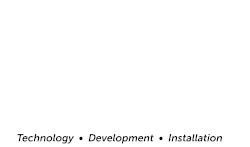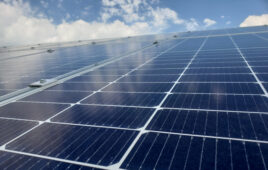A few official weeks under the 30% solar tariffs hasn’t brought the industry any more clarity, but there has been a lot of activity as suppliers and installers grapple with the new normal.
The four-year tariffs began Feb. 7 and affect imported crystalline silicon cells, modules and AC/integrated modules. A few Generalized System of Preferences (GSP) beneficiary countries are exempt from the tariffs as long as the collective share of GSP-manufactured products does not exceed 9% of total U.S. imports.
Many companies and countries have vocalized their dislike of the tariffs, with some going as far as filing lawsuits against the U.S. government. Three Canadian solar panel manufacturers (Silfab Solar, Heliene and Canada Solar Solutions) are suing President Trump’s administration in the United States Court of International Trade, claiming the new tariffs violate the Trade Act of 1974 and the North American Free Trade Agreement (NAFTA) Implementation Act. The European Union, China, Singapore, Taiwan, South Korea, Malaysia, the Philippines and Vietnam have filed similar complaints with the World Trade Organization. No timeline yet on when these arguments may be heard.
There is also pushback within the U.S. government. On Feb. 22, Senate Finance Committee members Sens. Tim Scott (R-SC) and Michael Bennet (D-CO) sent a bipartisan letter to President Trump urging him to lift the tariffs. The pair reiterated claims from SEIA that the safeguard measures will lead to the loss of 23,000 American solar jobs in 2018.
The Federal Registrar provided guidance on Feb. 14 for those companies looking to exclude themselves from the current 30% solar tariffs. Requests for exemption must be filed by March 16, and a one-month comment period follows. Any final exemption decisions will be made by U.S. Trade Representative Robert Lighthizer, after consultation with Secretary of Commerce Wilbur Ross and Secretary of Energy Rick Perry.
Those looking for exemption must explain why their product characteristics are distinguishable against other tariffed products. SunPower, for example, is requesting exemption because it uses interdigitated back contact (IBC) cell technology to produce high efficiency solar panels, which differ from the more basic imported solar panels. Enphase is also seeking exemption for its AC module relationships.
Contrary to President Trump’s comments that the United States is “reopening plants that have been closed for a long time,” no new or abandoned solar facilities have started operations. While China-based JinkoSolar did announce it has plans to open a manufacturing plant in the United States, nothing has been officially confirmed, not even the location. Oregon-based SolarWorld Americas and Texas-based Mission Solar seem to be only hiring back employees they previously laid off.
American-headquartered SunPower plans to reduce its non-manufacturing workforce by 150 to 250 employees by 2019—most of which because American projects are seen as “uneconomical” now with the tariffs. The company already announced it had stopped a planned $20 million investment in manufacturing, which led to the loss of hundreds of new manufacturing jobs, most within Texas and California.
In adjacent but still important news, President Trump officially ordered a 25% tariff on imported steel and a 10% tariff on imported aluminum on March 8. The tariffs will go into effect March 23, and both Mexican and Canadian imports are excluded. Under a Section 232 investigation (where imports are proven to be a threat to national security), the U.S. Commerce Department suggested in mid-February more modest tariffs of 24% on steel and 7.7% on aluminum.
Racking, mounting and tracking manufacturers will feel the brunt of this tariff, especially in the steel-heavy utility-scale market. GTM Research predicts a 2- to 4-cent increase on utility-scale projects because of the steel and aluminum price increases. Module manufacturers working with aluminum frames may also feel some cost pressure.
The next dates to keep an eye out for in the solar industry will be March 16 (exemption request deadline), April 16 (exemption comment deadline) and anything and everything that will be sure to pop up in between. Relax; open a (tariffed) can of beer, and watch the trade war play itself out.
This post was updated March 8 to include the official report on the steel and aluminum tariffs.





THANKS for the informative read
Much like the heyday of the U.S. tobacco industry and their attempts to thwart significant societal change, we have forces with vested financial interests at work in our society to hold back, deny and spread confusion over the value of renewable energy technologies. These tariffs are, in our opinion, just one part of those efforts.
But the long view shows the distributed energy resources/renewables industry will continue to move ahead. With a record, 18 million people out of power during the combined period of the September 2017 Atlantic Ocean hurricane season, recent California wildfires and the two dominant NorEasters over the last week in the Mid Atlantic to New England regions, will continue to drive more people to understand the industry’s intrinsic value.
Per the National Solar Job Census of 2016 (National Solar Jobs Census – The Solar Foundation), of the 260,000 workers in the solar industry in the US, 38,000 of them (about 15%), are in manufacturing, and a smaller fraction (not specifically broken out in the study) actually are manufacturing modules and cells subject to the tariffs. I would guess conservatively that about 1/4% of that, or maybe 10,000 people are involved in manufacturing cells and modules. The rest of those manufacturing jobs are producing other components – inverters, racking, combiner boxes, monitoring equipment, etc. So, this tariff theoretically might help about 4% of the workers in the solar industry in the US.
What this tariff actually does is raise the price of solar modules for everyone, which will shrink the market (estimates are at 10–20% loss of market size), hurting all of those 250,000+ workers not involved in cell or module manufacturing, and hurting consumers who will have to pay more for solar electricity. Estimates are at 20,000 to 30,000 job losses this year due to the tariff (President’s Decision on Solar Tariffs is a Loss for America | SEIA).
This tariff will not bring significantly more solar module manufacturing to the US, for many reasons. One reason is that the 4 year time horizon for the tariff, along with the annual step down, is not enough time or certainty for companies to invest the capital necessary to build plants here. By the time they started to see meaningful results, the tariffs will be gone.
But, even if it does generate some new solar manufacturing capacity, the solar industry is going to shrink, demand is going to go down, and everyone is going to have to lower their prices. The 2 US-based companies, SolarWorld and Suniva (which are actually both majority foreign owned) that initiated this trade case have zero chance of being able to compete and be profitable even with tariffs at this level. They are already gone, and not coming back.
The US solar industry is not a manufacturing industry. It is a development, finance, engineering, design, construction, sales, marketing, and service industry. And all those hard working American folks get hurt by the tariff.